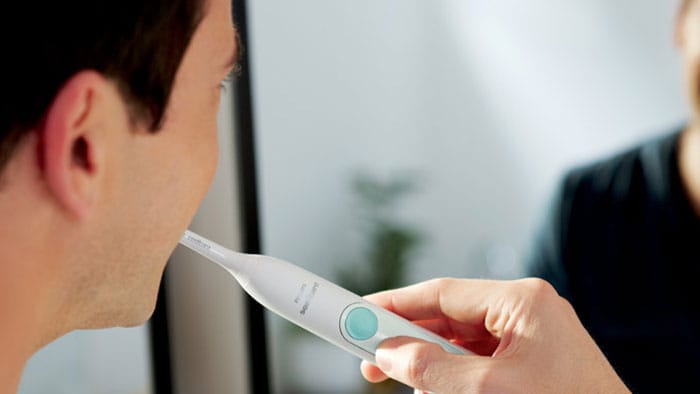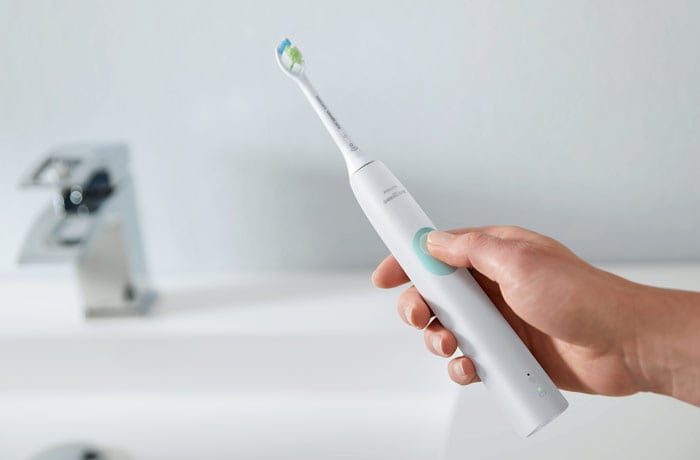
Gum recession: a guide to receding gum lines

Enamel is a very robust protective layer of the tooth crown. However, as strong as it is, enamel is unfortunately not invulnerable. External forces can lead to the so-called demineralisation of your teeth, softening the enamel and – in time – leading to enamel loss and transparent teeth. Here we’ll explore everything you need to know about enamel erosion including: So, read on for our comprehensive guide to enamel and dental erosion so you can begin your journey to healthy teeth.
Enamel is the hard outer surface of your tooth crown1 which is made up of minerals such as calcium and phosphorus as well as water and proteins.2 It serves as the protective layer to insulate the dentin, pulp, blood vessels, and nerves inside from external substances that could cause damage and sensitivity.
The fact that enamel protects the inner workings of your tooth shows just how important it is to your oral health. This makes it essential to care for it and understand the symptoms of dental erosion to avoid irreversible damage. Enamel erosion is a slow-advancing process. In its initial stages, you may not even notice it – it can only be diagnosed by a dentist using roughness measurements.3 As tooth erosion at the gum line or other surface areas of your tooth progress, you may notice the following symptoms of enamel loss: Tip: It is important that you and your family visit your dentist regularly, since they are able to detect enamel erosion early, and can help guide you through the next steps to prevent translucent teeth resulting in further damage. We recommend booking an appointment at least once a year4, or sooner if you believe there are issues at hand.
Now that you know what symptoms to keep an eye out for, you’re probably wondering what causes the damage in the first place. The top causes of enamel erosion are:5,6 Tip: In many cases, learning how to brush your teeth properly will help to prevent enamel loss and is a quick and easy fix! Our simple guide will show you the way to brush properly with both a manual and an electric toothbrush.
Once enamel is gone, it is gone forever.7 But just because you can’t get it back, doesn’t mean your teeth can’t be healthy. Preventing enamel erosion is key to protecting your teeth from irreversible damage, but what happens if you already have an enamel defect? Ultimately, a trip to your dentist is required. Depending on the extent of the damage, they will be able to offer a couple of options for your enamel loss8: These two options can help you if you already have transparent teeth from enamel loss, but ideally, you want to prevent the damage from becoming so extensive these steps are required. Read on for our guide to preventing dental erosion.

When teeth become transparent and you have an enamel defect already in place, it may be irreversible, but there are ways to strengthen tooth enamel from the comfort of your home in order to prevent dental erosion and enamel loss before it becomes an issue. Here are our top tips to help you avoid enamel erosion:
Tip: Ensuring you are using the right toothbrush is important if your teeth become transparent. A modern brush, such as the Philips Sonicare ProtectiveClean will help you to clean your teeth efficiently and gently at the same time. Its integrated pressure sensor alerts you when you are pushing too hard and helps you to protect your enamel.
Tip: Although we all love a treat every now and again, try to avoid consuming sweets, crisps, fizzy drinks, and other sugary and acidic products too often. The bacteria in your mouth thrive on sugar and they can lead to increased production of plaque.10
Tip: Always brush your teeth well after drinking green tea, since tannins contained in the tea could lead to tooth discolouration, which is an unwanted side-effect to using this method in your search of enamel strengthening tips.
Appropriate and efficient dental care will not just help you avoid transparent teeth and enamel loss but also prevent dental illnesses such as caries and gingivitis. With this guide, you know exactly how to care for your teeth so in the end you can maintain a healthy mouth and show a beautiful smile free from dental erosion.